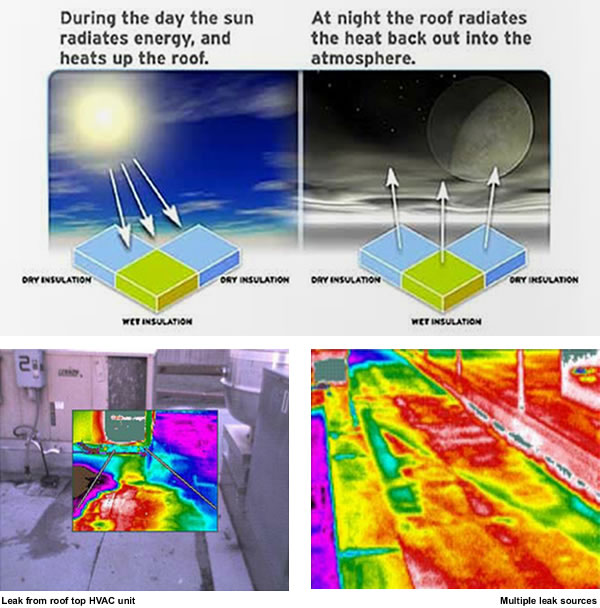Infrared Thermography
Infrared Thermography Helps Find the Source of the Leak
Infrared Moisture Surveys can find the Source of the Leak without Unnecessary Invasive Investigation which can lead to Significant Cost Savings
During the day, the sun radiates energy onto the roof and into the roof substrate. At night, the roof radiates the heat back into outer space. This is called radiational cooling. Areas of a roof that are of a higher mass (wet) retain this heat longer than do lower mass (dry) areas. Infrared imagers can detect this heat and “see” the warmer, higher mass areas, during the “window” of uneven heat dissipation.

The above images show how certain wet areas of the roof retain heat longer than dry areas. Some roofs, insulation types or combinations do not absorb any water. These roofs leak straight into the building. Even roofs with insulation types that do absorb water, do not always exhibit a good infrared signal, primarily for two reasons. 1) The surface is too reflective, and/or 2) the roof’s ballast is so thick (or dense), that daylight radiation is not absorbed into the substrate (insulation), therefore it cannot be emitted back into the atmosphere at night.
Even with a strong infrared signal, multiple roof factors can affect the analysis and interpretation of the data. Some of these factors include: 1) water between multiple layers, 2) old patches, 3) heavy flood coats, 4) reflective coatings, 5) heat-producing equipment under the roof – or heat blowing down onto the roof, 6) stains, 7) ponding water on the roof, and 8) heavy build-up of ballast at parapet walls and along edges, etc. These roofs should be inspected by other methods as well.
